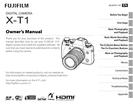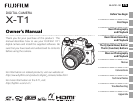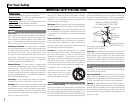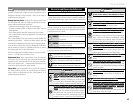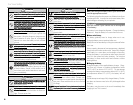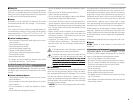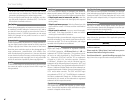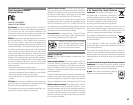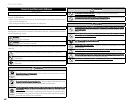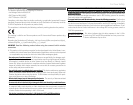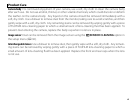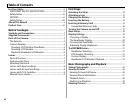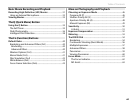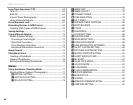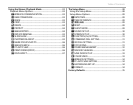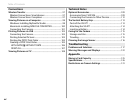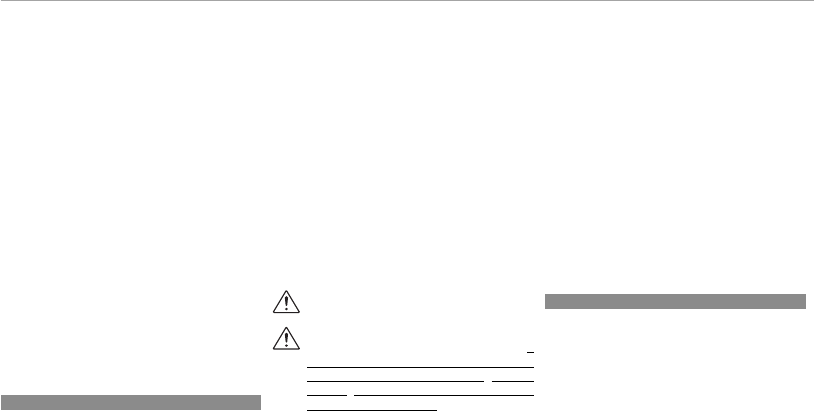
v
For Your Safety
■ Battery Life
At normal temperatures, the battery can be recharged about
300 times. A noticeable decrease in the length of time the
battery will hold a charge indicates that it has reached the
end of its service life and should be replaced.
■ Storage
Performance may be impaired if the battery is left unused
for extended periods when fully charged. Run the battery
fl at before storing it.
If the camera will not be used for an extended period, re-
move the battery and store it in a dry place with an ambient
temperature of from +15 °C to +25 °C (+59 °F to +77 °F). Do
not store in locations exposed to extremes of temperature.
■ Cautions: Handling the Battery
• Do not transport or store with metal objects such as neck-
laces or hairpins.
• Do not expose to fl ame or heat.
• Do not disassemble or modify.
• Use with designated chargers only.
• Dispose of used batteries promptly.
• Do not drop or subject to strong physical shocks.
• Do not expose to water.
• Keep the terminals clean.
• The battery and camera body may become warm to the
touch after extended use. This is normal.
AA Alkaline/Rechargeable Ni-MH Batteries
AA Alkaline/Rechargeable Ni-MH Batteries
Read this section if your camera uses AA alkaline or re-
chargeable AA Ni-MH batteries. Information on compat-
ible battery types may be found elsewhere in the camera
manual.
■ Cautions: Handling the Batteries
• Do not expose to water, fl ame, or heat, or store in warm or
humid conditions.
• Do not transport or store with metal objects such as neck-
laces or hairpins.
• Do not disassemble or modify the batteries or battery
casing.
• Do not subject to strong physical shocks.
• Do not use batteries that are leaking, deformed, or discol-
ored.
• Keep out of reach of infants and small children.
• Insert in the correct orientation.
• Do not mix old and new batteries, batteries with diff erent
charge levels, or batteries of diff erent types.
• If the camera will not be used for an extended period, re-
move the batteries. Note that the camera clock will be reset.
• The batteries may be warm to the touch immediately after
use. Turn the camera off and allow the batteries to cool
before handling.
• Battery capacity tends to decrease at low temperatures.
Keep spare batteries in a pocket or other warm place and
exchange as necessary. Cold batteries may recover some
of their charge when warmed.
• Fingerprints and other stains on the battery terminals
can impair battery performance. Thoroughly clean the
terminals with a soft, dry cloth before inserting them in
the camera.
If the batteries leak, clean the battery compartment
thoroughly before inserting new batteries.
If fl uid from the battery comes into contact with skin
or clothing, fl ush the aff ected area with water.
If
uid enters your eyes, immediately ush the a ected
uid enters your eyes, immediately ush the a ected
area with water and seek medical attention.
area with water and seek medical attention.
Do not rub
your eyes.
Failure to observe this precaution could result
Failure to observe this precaution could result
in permanent visual impairment
in permanent visual impairment.
■ Ni-MH Batteries
The capacity of Ni-MH batteries may be temporarily reduced
when new, after long periods of disuse, or if they are repeat-
edly recharged before being fully discharged. This is normal
and does not indicate a malfunction. Capacity can be in-
creased by repeatedly discharging the batteries using the
discharge option in the camera setup menu and recharging
them using a battery charger.
QCAUTION: Do not use the discharge option with alkaline
batteries.
The camera draws a small amount of current even when off .
Ni-MH batteries that have been left in the camera for an ex-
tended period may be drawn down to the point that they no
longer hold a charge. Battery performance may also drop if
the batteries are run down in a device such as a fl ashlight. Use
the discharge option in the camera setup menu to discharge
Ni-MH batteries. Batteries that no longer hold a charge
even after repeatedly being discharged and recharged have
reached the end of their service life and must be replaced.
Ni-MH batteries can be recharged in a battery charger (sold
separately). Batteries may become warm to the touch after
charging. Refer to the instructions provided with the charger
for more information. Use the charger with compatible bat-
teries only.
Ni-MH batteries gradually lose their charge when not in use.
■ Disposal
CAUTION: Dispose of used batteries in accord with local
regulations.
AC Power Adapters (Available Separately)
AC Power Adapters (Available Separately)
This section applies to all camera models. Use only
FUJIFILM AC power adapters designated for use with this
camera. Other adapters could damage the camera.
• The AC power adapter is for indoor use only.
• Be sure the DC plug is securely connected to the camera.
• Turn the camera off before disconnecting the adapter.
Disconnect the adapter by the plug, not the cable.
• Do not use with other devices.
• Do not disassemble.
• Do not expose to high heat and humidity.
• Do not subject to strong physical shocks.
• The adapter may hum or become hot to the touch during
use. This is normal.
• If the adapter causes radio interference, reorient or relocate
the receiving antenna.













